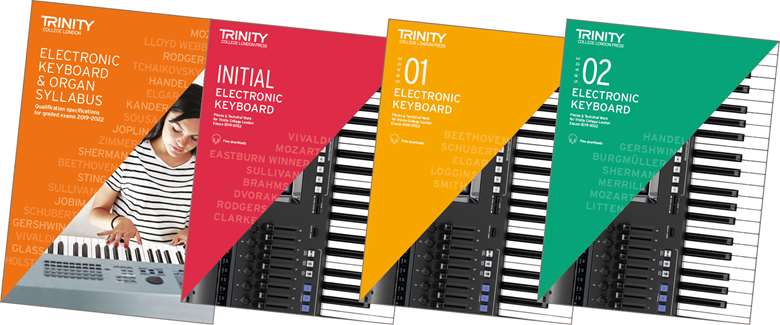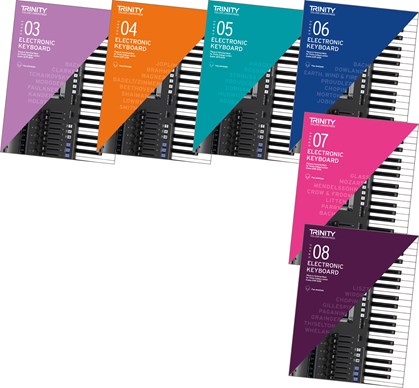TCL syllabus update: Electric keyboard and organ
Harry White
Thursday, November 1, 2018
Harry White on the update to Trinity College London's electronic keyboard and organ syllabus.

A new academic year has just begun, and with it, comes the cycle of changes to practical performance examinations. The electronic keyboard and organ syllabus of Trinity College London (TCL) – for first examination from January 2019 – is one example of a series that has been updated. The most obvious initial difference, in spite of the title, is that electronic organ examinations appear to have been withdrawn. Julia Martin, TCL's head of arts product development, explains the decision: ‘There have been huge technological advances in electronic keyboards over the past few decades, meaning that they now incorporate many of the features of the electronic organ, at a much more affordable cost, with more portability.
‘During this period there has been a sharp decline in the number of electronic organs sold, matched by a noticeable decrease in the number of learners and teachers. Our research shows that candidature from the electronic organ syllabus has migrated to the electronic keyboard.’ Martin does clarify that for any learners working towards exams, the current syllabus can be used until the end of 2019, and that the removal of electronic organ has no impact on pipe organ examinations.
That aside, there are a number of changes to the repertoire and technical aspects of the syllabus that reflect the electronic keyboard's improved reputation. These include a wider range of pieces drawn from folk, musical theatre, film, Latin and jazz that Martin says ‘candidates love to play’, and some new technical exercises that, she adds, are ‘designed to respect the electronic keyboard as its own instrument’.
The update
What were the fundamental reasons behind the syllabus changes? ‘Every time we look at refreshing our syllabuses, we take a look at the wider musical context in which that syllabus sits. We ask ourselves what candidates and teachers already like about the current syllabus, but also think about how the musical world around us is changing all the time,’ explains Martin. ‘We know that teachers and candidates love pieces they recognise and we wanted to underpin the new, updated repertoire selection with technical skills and supporting tests to offer an authentic framework for progression.
So new keyboard exercises demonstrate the need for keyboard players to gradually master common chord progressions as they work their way up through the grades. The new scales and arpeggios use the kinds of scales you see composers use in film scores, contemporary repertoire, jazz and folk. Technical work allows candidates to further explore techniques required by the pieces. We've also added the optional supporting test at higher grades of sequencing. This is because we know that the electronic keyboard has this unique functionality – engaging with technology and understanding sequencing is a skill young contemporary musicians will find useful.’

Syllabus changes do appear to have investigated more deeply the idiomatic nuances of the instrument and, consequently, helped to definitively differentiate the electronic keyboard from the pianoforte. ‘Our technical exercises develop three key electronic keyboard techniques progressively through the grades: use of keyboard functions, scales, and pianistic-style playing, with the aforementioned addition of sequencing at higher grades,’ explains Martin. ‘Pieces exploit many of the features of the electronic keyboard, introduced progressively through the grades, including pedal functions, split points, touch sensitivity, pre-programmed registrations and rhythm start/stop’, she continues.
‘Often electronic keyboard players will be presented with a lead sheet or similar in professional performance situations, and this is represented at each grade by an “own interpretation” option, giving candidates an opportunity to create their own personalised arrangement by changing voices, styles, melody and harmony. Candidates are encouraged to maximise use of their keyboard's features and their own musical imagination, rather than simply reproducing music exactly as the composer intended. Much of the repertoire played by electronic keyboard players is more contemporary than the piano syllabus, so our technical work reflects this, with more emphasis on modes, pentatonics and common chord progressions.’
The consideration behind repertoire selection is also sharply contrasted with that of piano. ‘Pieces on our syllabus lists are almost all arrangements that learners will know, plus some specially commissioned original pieces’, says Martin. ‘Electronic keyboard features a huge number of different voices, rhythms, accompaniment patterns and duet options, meaning that it is ideal for replicating the sounds of orchestras, big bands and folk bands. This is all exploited in our repertoire lists and books.’
Why would a parent or teacher encourage keyboard study, over perhaps the more orthodox route of learning to play the piano? ‘Compared to studying the piano it is potentially more affordable, portable, with smaller space requirements and the use of headphones as well as the incorporation of technology’, says Martin. ‘Our syllabus focuses on authentic skills specific to the electronic keyboard, enabling learners to master all of the instrument's features while performing pieces they know and like. Often learners like to take piano lessons and then explore the features of the electronic keyboard at home – I know lots of highly successful professionals that started this way. In putting the syllabus together we've spoken to a wide range of professionals who helped us build our repertoire selection and technical work to reflect this. Not only do keyboard players have to learn to play pianistically, they also have to engage with the fantastic technical capabilities of the instrument. Learning the electronic keyboard gives you a great understanding of what it's like to play piano but also the ability to recreate some of those skills and tech elements you hear in the charts’.

